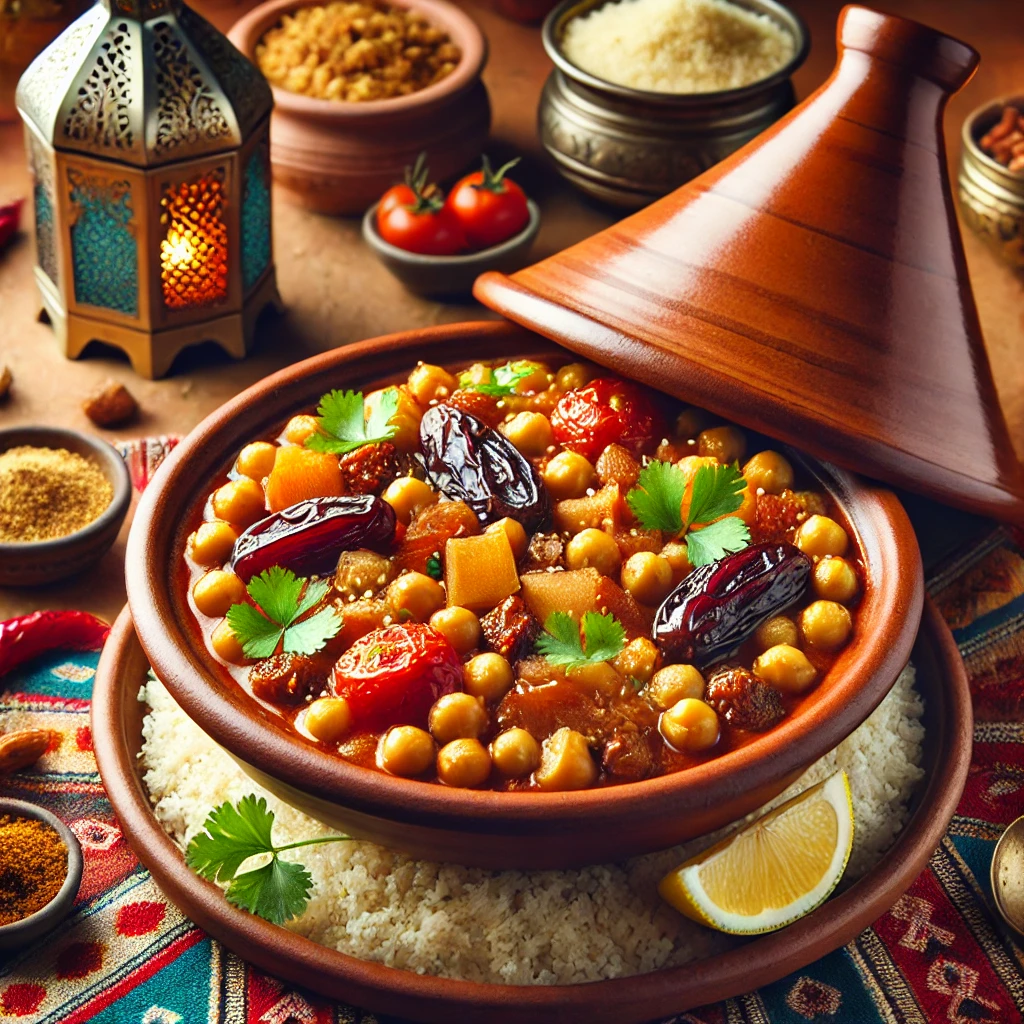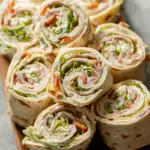Moroccan cuisine is renowned for its rich flavors, vibrant colors, and a tantalizing blend of spices that create a sensory experience like no other. Among the many treasures of this North African culinary tradition, the Moroccan Chickpea and Date Tagine stands out as a dish that is both nourishing and satisfying, embodying the essence of Moroccan culture. This article delves into the history, ingredients, preparation, and cultural significance of this beloved dish, offering a comprehensive guide to making it at home.
The Origins of Moroccan Tagine
To truly appreciate the Moroccan Chickpea and Date Tagine, it is essential to understand the origins of the tagine itself. A tagine is both the name of a traditional North African dish and the conical clay pot in which it is cooked. The word “tagine” is derived from the Berber word “tajin,” which refers to the shallow earthenware pot used by Berber tribes for cooking stews over an open flame.
The tagine pot’s unique shape allows steam to circulate during cooking, which helps tenderize meat and vegetables while preserving the dish’s aromatic flavors. The tradition of slow-cooking in a tagine dates back centuries and is deeply embedded in the culinary heritage of Morocco. Over time, the tagine has evolved into a symbol of Moroccan hospitality and communal dining.
The Allure of Moroccan Spices
One cannot discuss Moroccan cuisine without paying homage to its spices. The Moroccan Chickpea and Date Tagine, like many Moroccan dishes, is a symphony of spices that work together to create a complex yet harmonious flavor profile. The spices typically used in this dish include cumin, coriander, cinnamon, turmeric, ginger, and paprika.
Cumin and coriander provide earthy undertones, while cinnamon adds a subtle sweetness that pairs perfectly with the dates. Turmeric contributes a warm, golden color to the dish, and ginger imparts a zesty kick. Paprika, often smoked, brings a mild heat that balances the sweetness of the dates and the richness of the chickpeas. These spices are not only essential for flavor but also offer numerous health benefits, including anti-inflammatory and antioxidant properties.
Chickpeas: The Heart of the Dish
Chickpeas, also known as garbanzo beans, are the star of this tagine. These legumes have been a staple in Middle Eastern and North African diets for thousands of years, valued for their versatility, nutritional content, and affordability. Chickpeas are an excellent source of plant-based protein, making this dish a favorite among vegetarians and vegans.
In the Moroccan Chickpea and Date Tagine, chickpeas provide a hearty, creamy texture that absorbs the spices beautifully. They are often pre-cooked before being added to the tagine, ensuring they are tender and ready to soak up the flavors of the dish. Their mild, nutty flavor pairs wonderfully with the sweetness of the dates and the depth of the spices.
Dates: Nature’s Candy
Dates, often referred to as “nature’s candy,” play a crucial role in the Moroccan Chickpea and Date Tagine. Morocco is one of the world’s leading producers of dates, particularly the Medjool and Deglet Noor varieties, which are prized for their size, sweetness, and rich caramel-like flavor.
In this dish, dates add a natural sweetness that complements the savory elements and spices. They also contribute a luxurious, sticky texture that melds with the chickpeas, creating a satisfying contrast. Dates are not only delicious but also highly nutritious, packed with fiber, vitamins, and minerals. They are a symbol of prosperity and are often used in Moroccan cooking to celebrate special occasions.
The Art of Slow Cooking
The key to a perfect Moroccan Chickpea and Date Tagine lies in the art of slow cooking. Traditional tagines are cooked over low heat for several hours, allowing the ingredients to meld together and develop deep, complex flavors. While modern cooks may use a stovetop or oven to replicate this process, the principle remains the same: patience and gentle heat are essential.
The process begins with sautéing onions and garlic in olive oil until they are soft and fragrant. The spices are then added, releasing their aromas as they bloom in the hot oil. Next, the chickpeas, tomatoes, and dates are introduced, along with a bit of water or broth to create a sauce. The tagine is then covered and left to simmer gently, allowing the flavors to marry and the ingredients to soften.
As the tagine cooks, the liquid reduces, thickening into a luscious sauce that coats the chickpeas and dates. The result is a dish that is deeply flavorful, with each bite offering a perfect balance of sweet, savory, and spicy notes.
Serving the Tagine
Moroccan Chickpea and Date Tagine is traditionally served with couscous, a staple grain in Moroccan cuisine. The light, fluffy texture of couscous provides a perfect canvas for soaking up the rich sauce of the tagine. Alternatively, the dish can be served with crusty bread, which is often used to scoop up the stew in traditional Moroccan meals.
The tagine is typically garnished with fresh herbs, such as cilantro or parsley, and sometimes toasted almonds or sesame seeds for added texture. A wedge of lemon on the side adds a refreshing acidity that cuts through the richness of the dish.
Cultural Significance and Variations
In Moroccan culture, the tagine is more than just a meal; it is a symbol of hospitality and togetherness. Sharing a tagine is a communal experience, with diners often eating from the same dish using pieces of bread to scoop up the stew. This practice fosters a sense of unity and connection, which is central to Moroccan dining traditions.
While the Chickpea and Date Tagine is a popular vegetarian option, there are many variations of tagine, each with its own unique combination of ingredients. Lamb or chicken tagines are common, often cooked with dried fruits like apricots or prunes, as well as olives and preserved lemons. Vegetable tagines are also popular, featuring seasonal produce like zucchini, carrots, and bell peppers.
In different regions of Morocco, tagines may be flavored with local spices or ingredients, reflecting the diverse culinary landscape of the country. Despite these variations, the essence of the tagine remains the same: a slow-cooked, flavorful stew that brings people together.
Bringing Moroccan Cuisine to Your Kitchen
Making a Moroccan Chickpea and Date Tagine at home is a rewarding experience that allows you to explore the rich culinary traditions of Morocco. While it may seem daunting at first, the process is relatively straightforward, especially with the right ingredients and equipment.
If you do not have a traditional tagine pot, a heavy-bottomed Dutch oven or a slow cooker can be used as a substitute. The key is to maintain a low, steady heat and to allow the dish to cook slowly, so the flavors have time to develop.
When selecting dates for your tagine, opt for high-quality varieties like Medjool or Deglet Noor, which offer the best flavor and texture. Canned chickpeas can be used for convenience, but if you have the time, cooking dried chickpeas from scratch will yield a more authentic result.
As you prepare the tagine, take the time to savor the process. The aromas that fill your kitchen as the spices toast and the stew simmers are as much a part of the experience as the final dish itself. And when the tagine is ready, gather your family or friends around the table, and enjoy the meal together, just as it is done in Morocco.
Conclusion
The Moroccan Chickpea and Date Tagine is a dish that encapsulates the essence of Moroccan cuisine: a harmonious blend of spices, a balance of sweet and savory flavors, and a slow-cooking process that brings out the best in each ingredient. Whether you are a seasoned cook or a culinary adventurer, this tagine offers a taste of Morocco’s rich culinary heritage, inviting you to explore new flavors and traditions.
By bringing this dish into your kitchen, you are not only creating a delicious meal but also participating in a centuries-old tradition of communal dining and hospitality. So, the next time you are looking to prepare something special, consider the Moroccan Chickpea and Date Tagine—a dish that promises to warm your heart and soul with every bite.






